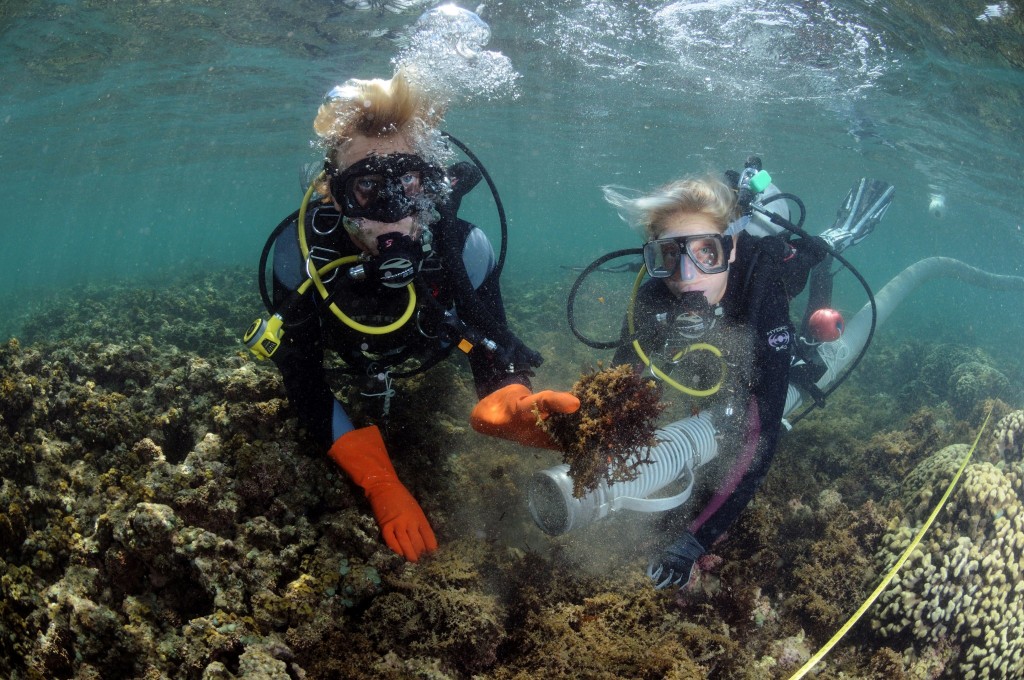Kaneohe Bay, a keyhole-shaped notch on the southeastern shore of Oahu, is known for its placid waters, its coral reefs, and one very large, floating vacuum cleaner.
Not long ago, Eric Conklin, marine science advisor for The Nature Conservancy, gave me a tour of the bay in his rubber-sided outboard. We called on a small barge, where a dishwasher-sized gold dredger — originally designed to suck gravel and flecks of gold out of mountain streams — was bolted to the deck. Officially known as the Super Sucker (“It started out as a joke, but we kept saying it, and after a while we could say it with a straight face,” said Conklin), the barge is crewed by a half-dozen divers, who take turns swimming slowly over the reef and wrestling the dredger’s 4-inch-diameter plastic tubing toward thick tumbleweeds of invasive algae. They vacuum the reef, bag the collected algae, and give it to local farmers, who prize it for its ability to fertilize enormous sweet potatoes.
Two divers can collect 800 pounds in an hour. But there are many millions of pounds to go.
When Conklin was a graduate student at the University of Hawaii in the mid-1990s, algae was rare in the bay, but exotic aquatic plants, introduced mostly by the aquarium trade, are now common and spreading. Some, like gorilla ogo, grow in large, thick mats that smother coral and choke out fish habitat. By deploying the Super Sucker (and two smaller, more portable progeny, the Super Sucker Jr. and the Mini Sucker), Conklin hopes to nudge Oahu’s reefs into better health — and make them better able to withstand rising ocean temperatures, disease, and the other intertwined pressures of climate change. For the most optimistic of reef scientists, this is the mantra: Hope lives, but it lives in refugia.
As our outboard bobbed near the Super Sucker, Conklin described Palmyra Atoll, one of the most isolated atolls in the world and something of a Mecca for reef experts. There, he said, the corals are far more diverse and colorful, and fish of all sizes are abundant. There was a disease outbreak near Palmyra last year, he acknowledged, but the coral is already recovering. “We can protect it,” Conklin said, gesturing so urgently that the boat rocked. He stopped. “If we don’t — well, then, we really are headed for disaster.”
We pulled on masks and fins and jumped in to explore Reef 44, which Conklin studied during his doctoral work and still describes, affectionately, as the best-looking reef in the bay. Under the surface, the water was cool and clear, and bumpy fields of coral stretched as far as we could see. Disks of mushroom coral lay in the reef crevices, scattered like dropped coins. Sea turtles as big as wheelbarrows oared calmly away from us, coming to rest on patches of coral worn and flattened by their shells. Here and there, tangles of green, rubbery algae moved gently in the waves. Conklin grabbed a plant about the size of his head and tore it away, revealing a dead-white finger of coral.
Top photo by Sterling Kaya.
